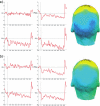Windows on the human body--in vivo high-field magnetic resonance research and applications in medicine and psychology
- PMID: 22219684
- PMCID: PMC3247729
- DOI: 10.3390/s100605724
Windows on the human body--in vivo high-field magnetic resonance research and applications in medicine and psychology
Abstract
Analogous to the evolution of biological sensor-systems, the progress in "medical sensor-systems", i.e., diagnostic procedures, is paradigmatically described. Outstanding highlights of this progress are magnetic resonance imaging (MRI) and spectroscopy (MRS), which enable non-invasive, in vivo acquisition of morphological, functional, and metabolic information from the human body with unsurpassed quality. Recent achievements in high and ultra-high field MR (at 3 and 7 Tesla) are described, and representative research applications in Medicine and Psychology in Austria are discussed. Finally, an overview of current and prospective research in multi-modal imaging, potential clinical applications, as well as current limitations and challenges is given.
Keywords: 1H; 23Na; 31P; EEG; MRI; MRS; SCP; SWI; brain; cartilage; fMRI; joints; magnetic field strength; magnetic resonance; multi modal imaging; sensors; skeletal muscle.
Figures














References
-
- Ugurbil K., Adriany G., Andersen P., Chen W., Garwood M., Gruetter R., Henry P.G., Kim S.G., Lieu H., Tkac I., Vaughan T., van De Moortele P.F., Yacoub E., Zhu X.H. Ultrahigh field magnetic resonance imaging and spectroscopy. Magn. Reson. Imaging. 2003;21:1263–1281. - PubMed
-
- De Graaf RA. In Vivo NMR Spectroscopy: Principles and Techniques. Wiley; Chichester, UK; New York, NY, USA: 1998. p. xxi.p. 508.
-
- Haacke E.M. Magnetic resonance imaging: physical principles and sequence design. Wiley & Sons; New York, NY, USA: 1999. p. xxvii.p. 914.
-
- Filippi M. fMRI Techniques and Protocols. Springer; New York, NY, USA: 2009. p. xiii.p. 843.
Publication types
MeSH terms
LinkOut - more resources
Full Text Sources
Medical

